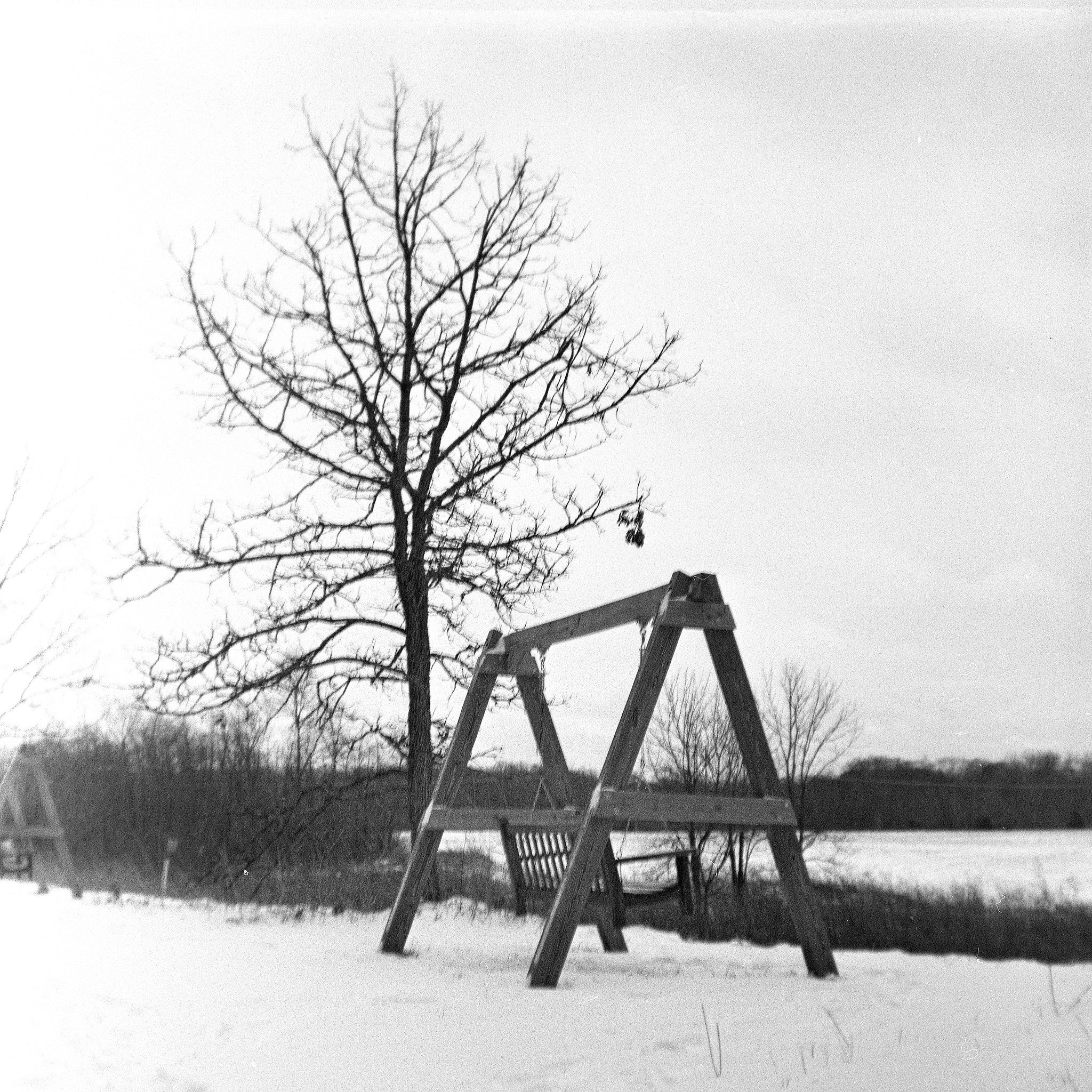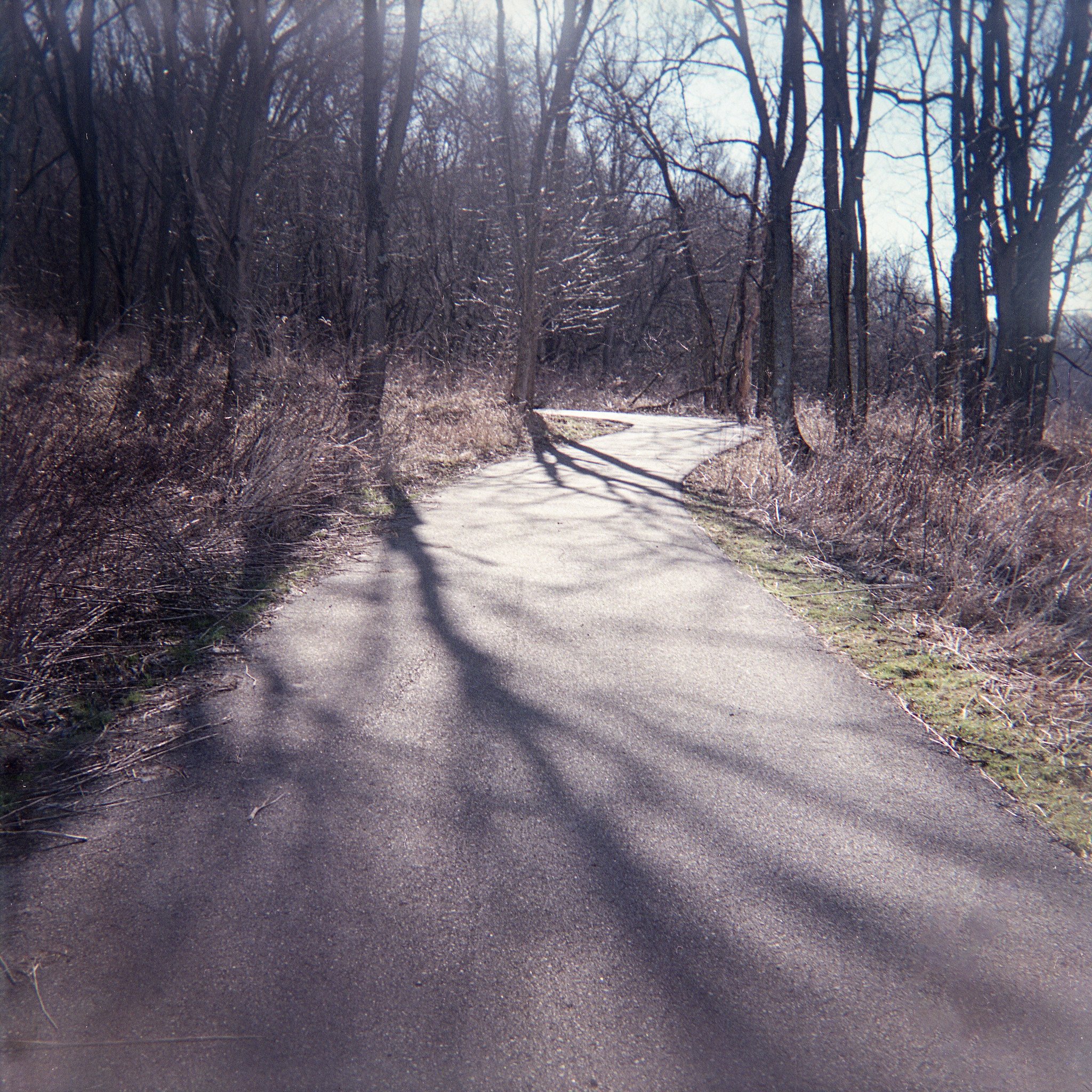Life in Squares – Kodak Brownie Hawkeye and Argus Seventy Five
It’s been a minute since my last installment of “Life in Squares”, so I thought it was time for another. I’ve been shooting with a few “new-to-me” 6x6 cameras over the past year since my Hasselblad post – including some Rolleiflexes and Rolleicords. More on that to come in another post. But I’ve also been spending some time with 2 bakelite wonders from the 1950’s – the Kodak Brownie Hawkeye and the Argus Seventy Five. For those folks who want to dip their toe into the 6x6 medium format film world but don’t want to shell out Hasselblad/Rolleiflex money, both of them are great ways to get started and/or add some low-fi creativity to their work.
Brownie Hawkeye
First up, the Kodak Brownie Hawkeye. Here are a few specs:
Years Produced: 1949 thru 1961 (Brownie Hawkeye “Flash” model pictured, which was made
from 1950 thru 1961)
Original Price: $7.00 ($14.00 as a “kit” with flash, bulbs, and 2 rolls of film)
Today’s “street” price: $20 to $50 depending on condition and accessories
Film Type: 620 (or 120 with some modifications)
Lens: 81mm Single Element Miniscus Lens
Fixed Focal Range: 10’ to Infinity
Aperture: f/15
Shutter Speed: Somewhere around 1/25th to 1/30th second, or Bulb (but no tripod mount cable release port)
Multiple Exposure Prevention: None
The Brownie Hawkeye was manufactured by Kodak in Rochester, NY and was a popular camera in its day. It was used by people in many different walks of life to shoot family, landscapes, vacations, etc. Kodak made and sold millions of them, and they have become an American icon. Walk into almost any antique store or thrift shop and there will be a Brownie Hawkeye on the shelf.
My first Brownie Hawkeye was purchased on eBay a few years ago. That Brownie came complete with an exposed roll of film from the late 1960’s just waiting for me to develop. More on that can be found here. The camera was fairly beat-up with cracks in the bakelite and chunks of it missing near the bulb switch, but it was still light-tight enough to protect the film for 50+ years since it had been shot until I developed it. Some of the images on the roll are below. If you know any of these people, please let me know!
For $20 it was a fun investment that gave me a glimpse of the past and a camera that I could tinker with. After I cleaned it up, I reversed the lens in it so that I could do some close-up shooting. I also modified it to accept a roll of 120 film, although you have to use a 620 take-up spool. More on how to do that can be found here. Some close-up shots taken with it are below.
Last year I picked up another Brownie Hawkeye Flash in its original box with flash, bulbs, and an old roll of Kodak Verichrome film for less than $20. I shot that roll of Verichrome in another camera and wrote about it here. I cleaned my “new” Brownie (but left the lens in the standard orientation for infinity focus) and went out and shot a roll of HP5+ with it. A few shots were blurry – that 1/30 th or so of a second shutter speed is hard to hand hold!
As an example of other’s work with the Brownie Hawkeye, check out this shot below from Chris Hamm . This was shot on Kodak Ektar and is a great example of what’s possible with the Brownie. Chris does some nice work on both film and digital. You can check out more of his work here .
Photo courtesy of Chris Hamm. Brownie Hawkeye Flash with Kodak Ektar film.
Argus Seventy Five
The second camera for discussion today is the Argus Seventy Five. This camera was a direct competitor for the Brownie, and was made in Ann Arbor, Michigan. The Seventy Five was closer in appearance to a TLR camera like the more expensive Rolleiflex or Yashica cameras of the day, although it wasn’t a true TLR. Because it was fixed focus and the viewing lens and taking lens were not coupled, it was considered to be a “pseudo-TLR”. Truthfully the Brownie was nearly the same in theory, it just didn’t have the viewfinder hood that popped up.
Stats are below:
Years Produced: 1949 thru 1964
Original Price: $16.00 (Sold as a “kit” with leather case, flash, and close-up “portrait” lens add-on)
Today’s “street” price: $20 to $50 depending on condition and accessories
Film Type: 620 (or 120 with some caveats)
Lens: 75mm Single Element Miniscus Lens
Fixed Focal Range: 7.5’ to Infinity
Aperture: f/11
Shutter Speed: 1/60 th second, or Bulb w/tripod socket (but no cable release provision)
Multiple Exposure Prevention: Yes – camera shutter won’t fire until film is wound forward.
I picked up my Argus Seventy Five at World of Used Photography in Columbus, Ohio for $20. It was in fairly good shape with the original thin (think shoestring) strap and 620 spool inside. Like the Brownie, you can shoot 120 film in it, although not quite as easily. You have to either re-spool your 120 film onto a 620 spool, or, trim the slight excess ridge off the outside of the 120 roll to make it smaller in diameter. Either way you still have to use the 620 roll for the take-up roll.
After giving it a good cleaning and trimming the spool of a roll of Fuji Pro 400H to fit, I shot the Argus on a hike at Morris Reserve in Bellbrook, Ohio. The strap made it easy to carry the lightweight camera around my neck, and the viewfinder was big and bright. There was a certain satisfaction of flipping up the pseudo TLR top cover to reveal the viewfinder to take the image. The Brownie doesn’t have that, and its not really a needed feature. But it gives you those expensive Rolleiflex TLR feels, which is something that I’m certain was a marketing consideration back then.
Images from the hike are below.
Which one is better?
On paper, both have specs that look similar. Size, weight, and image quality are also comparable. They both have a great mid-century modern look. And the cost to purchase today is nearly identical. That said, the Seventy Five gets the nod from me for a few reasons.
Viewfinder is brighter and bigger compared to the Brownie. And oh that flippy top.
Slightly wider lens
Slightly faster shutter speed makes hand-holding a little easier
Bakelite seems thicker than the Brownie, and the metal back seems more durable
Tripod mount
Strap is more convenient than the handle on the Brownie
That said, the Brownie has a cult following and is still fun to use, so you really can’t go wrong either way. If you had an urge to pick-up a cheap bakelite camera and you found a nice Brownie at Goodwill or an antique shop for $20 or less, its worth giving it a try. Whichever one you purchase, be certain to check on the inside that there’s an empty metal 620 spool in there so that you can use it as the take-up spool. If there isn’t a 620 spool in there, a spool on eBay or Etsy may cost you just as much as you just paid for the camera! Also important - if you send your film off to a lab to develop, tell them you want that spool back.
The main competition today for The Brownie and the Seventy Five is the Holga series of cameras. The Holga appeals to many for its “low fidelity” and low cost of entry into the world of medium format film. At the moment a new Holga 120N is going to run you approximately $40 plus shipping, and used ones are somewhere between $20 and $40. If you hold a Holga in one hand, and the Brownie or Seventy Five in the other, the Holga loses every time in terms of look, feel, and perceived quality. The older cameras are going to be less prone to light leaks and have latches that actually keep the back shut and on the camera. More people are going to walk up to you when you have the Argus Seventy Five around your neck and strike up a conversation. And the Holga viewfinder is HORRIBLE in comparison to either the Brownie or the Seventy Five.
Which would you choose?
Thanks for reading, and feel free to leave any comments or questions below!
Jeremy

























